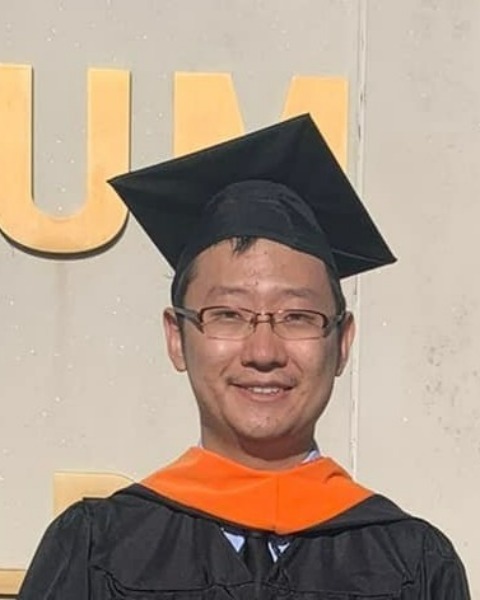Drug Delivery
(I-346) A Slim, Pulse-Driven Microfluidic Patch-Pump for Insulin Delivery

Shuyu Zhang, MS (he/him/his)
Graduate Assistant
Virginia Tech
Blacksburg, Virginia, United States- RD
Rafael Davalos
L. Preston Wade Professor
Department of Biomedical Engineering and Mechanics, Virginia Tech - Wake Forest University, United States - AS
Anne Staples, PhD (she/her/they/them)
Associate Professor
Virginia Tech
Blacksburg, Virginia, United States
Presenting Author(s)
Co-Author(s)
Primary Investigator(s)
Diabetes is a common condition that currently affects approximately 500 million patients worldwide. Insulin is typically delivered to diabetic patients through a battery-powered insulin pump, or a cannula-driven syringe or pen. According to insulin users, these delivery methods involve limitations including painful cannula insertion, interference with daily activity, embarrassment, and cost. In order to address these drawbacks, we are developing microfluidic patch-pumps using insect-mimetic technology. Briefly, our devices are inspired by the insect respiratory system and rely on a rhythmic pulse signal, which drives fluid flow through the periodic collapse of a flexible membrane. Ideal devices should exhibit a constant flow rate with respect to the heart rate and those with a decreasing flow rate with increasing heart rate, as the demand for insulin is expected to decrease with increasing heart rates in conditions such as exercise. The objectives of this study are to identify such ideal devices and to fabricate prototype devices integrated with 3D-printed hollow microneedle arrays and fluid reservoirs for painless and sustained delivery.
Materials and Methods::
For device fabrication, master molds were printed using a stereolithographic (SLA) 3D printer. The insect-mimetic flow channel layer, the actuation channel layer, and fluid reservoirs were fabricated by cast molding PDMS onto the master molds. Spin coating was used to fabricate the thin membrane, and different PDMS parts were plasma bonded together. Hollow microneedle arrays were printed with an SLA 3D printer. To test the performance of devices, the heart rate and the blood pressure were modeled by the frequency and magnitude of the pressure signal, respectively, of a pressurized air-driven pulse simulator. Twelve heart rates from 30 to 180 bpm were tested across several design generations, and the ideally performing devices were determined by measuring the flow rate across the devices.
Results, Conclusions, and Discussions::
Results: By designing and fabricating five generations of devices with each generation ranging between 15 and 24 different device prototypes, we have determined that the device shown in Figure 1A has an ideal performance, specifically a slightly negative flow rate-heart rate correlation and a relatively low variability of approximately ±20% (Figure 1A). We have also tested the flow across devices integrated with fluid reservoirs and found that they were able to sustain a flow for five hours (Figure 1B). We have fabricated microfluidic devices integrated with fluid reservoirs and microneedle arrays, as shown in Figure 1C. Proof-of-concept flow testing was performed on the integrated devices, suggesting that these devices were able to generate a flow inherently and deliver fluid through the microneedle arrays.
Discussion and Conclusions: Through this study, we have evolved the design of insect-mimetic devices towards those generating a consistent flow rate that is negatively related to the actuating heart rate. This is important because the glucose level of the wearer is expected to decrease in elevated heart rate conditions such as exercise, which decreases the demand for insulin. However, devices with a flow rate insensitive to the heart rate are also considered because they will eliminate the need to tailor the design of devices to patients with different resting heart rates, although the heart rate feedback mechanism is absent. With the successful fabrication of working devices integrated with microneedle arrays and fluid reservoirs, we have demonstrated that it is feasible to develop slim, wearable devices for sustained and painless insulin delivery.
Acknowledgements (Optional): :
We thank Mrigank Dhingra, Julia Frederick, Aleksandra Grodski, Cayla Katz, Jessica Prisbe, Adaliah Dunya, and Vedant Shah for their contributions. This work was supported by the Virginia Tech Student Engineers' Council.
References (Optional): :
Chatterjee et al., Bioinspiration & Biomimetics, 16(3), 036004, 2021.
Saeedi et al., Diabetes research and clinical practice, 157, 107843, 2019.
Sarkar et al., JAMA Network Open, 4(10), e2128782, 2021.
Umpierrez and Klonoff, Diabetes care, 41(8), 1579–1589, 2018.
Sarbacker and Urteaga, Diabetes Spectrum, 29(3), 166-170, 2016.
Davies et al., Diabetic Medicine, 30(5), 512-524, 2013.
Yeung et al., Biomicrofluidics, 13(6), 064125, 2019.
Zhang et al., Bulletin of the American Physical Society, 2022.
